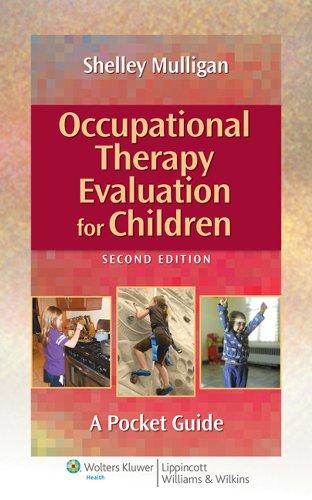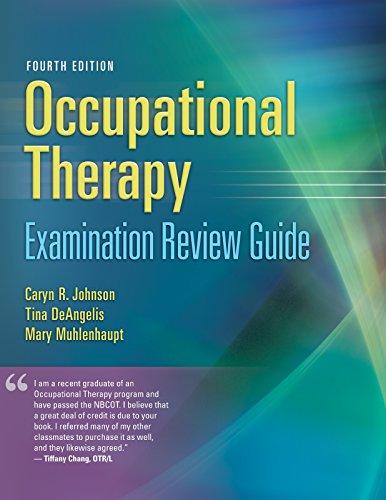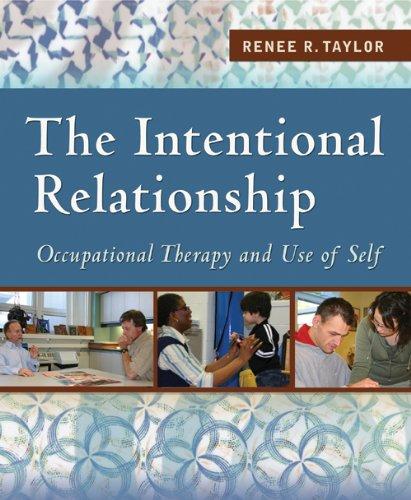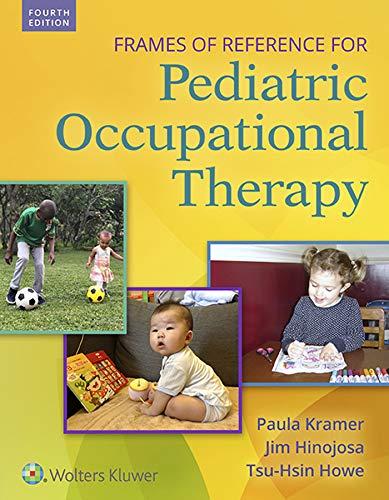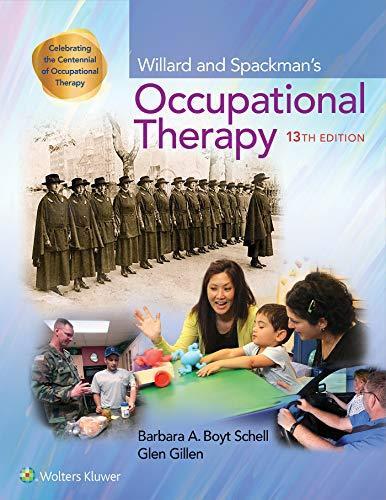Acknowledgments
We would like to thank all the children who are featured in the video clips and case studies:
Adam
Ana
Annabelle
Camerias
Christian
Christina
Eily
Ema
Emily
Emily Faith
Isabel
Jessica Jillian
Katelyn
Luke
Matt
Micah
Nathan
Nathaniel
Nicholas
Paige
A special thank you to the parents who so openly shared their stories with us:
Charlie and Emily Adams
Robert and Carrie Beyer
Freda Michelle Bowen
Nancy Bowen
Kelly Brandewe
Ernesty Burton
Ruby Burton
Lori Chirakus
Joy Cline
Sondra Diop
Lisa M. Grant
Ivonne Hernandez
Shawn Holden
Luann Hoover
Sandra Jordan
Joanna L. McCoy
Maureen P. McGlove
Jill McQuaid
Stephanie L. Mills
David J. Petras
Theresa A. Philbrick
We are very appreciative of the siblings and buddies who agreed to help us out:
Aidan
Lori Megan
Robert Todd and Keith
Tommy, Owen, and Colin
We thank all the therapists and physicians who allowed us to videotape their sessions and provided us with such wonderful examples:
Chrissy Alex
Sandy Antoszewski
Mary Elizabeth F. Bracy
Amanda Cousiko
Emily de los Reyes
Katie Finnegan
Karen Harpster
Terri Heaphy
Katherine Inamura
A special thanks to Matt Meindl, Melissa Hussey, David Stwarka Jennifer Cohn, Stephanie Cohn, and all the authors who submitted videotapes. Thank you to Emily Krams, Alicen Johnson, Britanny Peters, Katherine Paulaski, Kate Loukas, Scott McNeil, Jan Froehlich, MaryBeth Patnaude, Molly O’Brien, Keely Heidtman, Greg Lapointe, Caitlin Cassis, Judith Cohn, Jazmin Photography, and Michelle Lapelle. A special thanks to Mariana D’Amico, Peter Goldberg, and Carrie Beyer for all their expertise with videotaping. Jolynn Gower, Penny Rudolph, Tracey Schriefer, and Katie Gutierrez were instrumental in developing and completing this text and were
Lisa A. King
Dara Krynicki
Marianne Mayhan
Taylor Moody
Peggy
Samuel
Sydney Teagan
Tiandra
William
Zane
Ann Ramsey
Teresa Reynolds-Armstrong
Tuesday A. Ryanhart
Julana Schutt
P. Allen Shroyer
Douglas Warburton
Julie Potts
Ann Ramsey
Suellen Sharp
Carrie Taylor
a pleasure with whom to work. Jane O’Brien would like to thank her family—Mike, Scott, Alison, and Molly—for their continual support. She would also like to thank her colleagues and students at the University of New England, all the authors, and Jane Case-Smith.
Jane Case-Smith thanks her family—Greg, David, and Stephen—for their support and patience. She also thanks her colleagues in the Division of Occupational Therapy, The Ohio State University, for their support. We both thank all the authors for their willingness to share their expertise and their labor and time in producing excellent chapters.
SECTION I Foundational Knowledge for Occupational Therapy for Children
1 An Overview of Occupational Therapy for Children, 1
Jane Case-Smith
Essential Concepts in Occupational Therapy for Children and Adolescents, 1
Individualized Therapy Services, 1
Inclusive and Integrated Services, 4
Cultural Competence That Embraces Diversity, 6
Evidence-Based Practice and Scientific Reasoning, 8
Comprehensive Evaluation, 9
Ecologic Assessment, 10
Analyzing Performance, 12
Occupational Therapy Intervention Process, 12
Interventions to Enhance Performance, 13
Activity Adaptation and Environmental Modifications, 18
Interventions Using Assistive Technology, 18
Environmental Modification, 20
Consultation, Coaching, and Education Roles, 20
Consultation and Coaching, 21
Education Roles, 21
2 Foundations and Practice Models for Occupational Therapy with Children, 27
Jane Case-Smith
Overarching Conceptual Models, 28
Occupation and Participation, 28
Ecologic Theories, 30
Occupational Therapy Practice Framework and World Health Organization International Classification of Functioning, Disability, and Health, 32
Child-Centered and Family-Centered Service, 33
Strength-Based Approaches, 34
Conceptual Practice Models Specific to Performance Areas, 36
Cognitive Performance, 36
Social Participation, 40
Sensorimotor Performance, 44
Biomechanical Approaches, 51
Neurodevelopmental Therapy, 51
Task and Environment Adaptation, 54
Coaching and Consultation Models, 56
3 Development of Childhood Occupations, 65
Jane Case-Smith
Developmental Theories and Concepts, 65
Cognitive Development, 65
Motor Development, 67
Stages of Motor Learning, 70
Social-Emotional Development, 71
Self-Identity and Self-Determination Development, 74
Development of Occupations, 76
Ecologic Models and Contexts for Development, 77
Children’s Occupations, Performance Skills, and Contexts, 79
Infants: Birth to 2 Years, 79
Early Childhood: Ages 2 to 5 Years, 87
Middle Childhood: Ages 6 to 10 Years, 94
4 Adolescent Development: Transitioning from Child to Adult, 102
Kerryellen Vroman Adolescence, 102
Adolescent Development, 102
Physical Development and Maturation, 105
Physical Activities and Growth: Teenagers with Disabilities, 105 Puberty, 106
Psychosocial Development of Puberty and Physical Maturation, 107
Cognitive Development, 108
Psychosocial Development, 109
Search for Identity: Identity Formation, 109
Self-Identity and Well-Being, 112
Sexual Orientation: Gender Identity, 112
Self-Concept and Self-Esteem, 112
Adolescence and Mental Health, 113
Areas of Occupation: Performance Skills and Patterns, 115
Work: Paid Employment and Volunteer Activities, 115
Instrumental Activities of Daily Living, 116
Leisure and Play, 117
Social Participation, 117
Evolution of Adolescent-Parent Relationships, 120 Environments of Adolescence, 121
Occupational Therapy to Facilitate Adolescent Development, 121
5 Working with Families, 129
Lynn Jaffe, Sharon Cosper Reasons to Study Families, 129
The Family: A Group of Occupational Beings, 130
System Perspective of Family Occupations, 131
Family Subsystems, 133 Parents, 133
Siblings, 133
Extended Family, 134
Family Life Cycle, 134
Early Childhood, 135
School Age, 136
Adolescence, 137
Family Resources and the Child with Special Needs, 137
Financial Resources, 137
Human Resources, 138
Time Resources, 139
Emotional Energy Resources, 139
Sources of Diversity in Families, 140
Ethnic Background, 140
Family Structure, 141
Socioeconomic Status, 141
Parenting Style and Practices, 142
An Ecologic Perspective, 142
Supporting Participation in Family Life, 142
Development of Independence in Self-Care and Health
Maintenance Routines, 142
Participation in Recreational and Leisure Activities, 143
Socialization and Participation in Social Activities, 144
Fostering Readiness for Community Living, 145
Family Adaptation, Resilience, and Accommodation, 145
Partnering with Families, 146
Establishing a Partnership, 147
Providing Helpful Information, 147
Providing Flexible, Accessible, and Responsive Services, 147
Respecting Family Roles in Decision Making, 149
Communication Strategies, 149
Home Programs: Blending Therapy into Routines, 149
Working with Families Facing Multiple Challenges, 149
Families in Chronic Poverty, 149
Parents with Special Needs, 151
SECTION II Occupational Therapy Evaluation in Pediatrics
6 Use of Standardized Tests in Pediatric Practice, 163
Pamela K. Richardson
Influences on Standardized Testing in Pediatric Occupational Therapy, 164
Purposes of Standardized Tests, 167
Determination of Medical or Educational Diagnoses, 167
Documentation of Developmental, Functional, and Participation Status, 167
Planning Intervention Programs, 168
Measuring Program Outcomes, 168
Measurement Instruments for Research Studies, 168 Characteristics, 168
Types of Standardized Tests, 168
Technical Aspects, 174
Descriptive Statistics, 174
Standard Scores, 175
Reliability, 176
Validity, 179
Becoming a Competent Test User, 181
Choosing the Appropriate Test, 181
Learning the Test, 182
Checking Inter-rater Reliability, 182
Selecting and Preparing the Optimal Testing Environment, 184
Administering Test Items, 184
Interpreting the Test, 184
Evaluating the Clinical Usefulness of the Test, 185
Ethical Considerations in Testing, 185 Examiner Competency, 185
Client Privacy, 185
Communication of Test Results, 186 Cultural Considerations When Testing, 186
Advantages and Disadvantages of Standardized Testing, 186 Advantages, 187 Disadvantages, 187
SECTION III Occupational Therapy Intervention: Performance Areas
7 Application of Motor Control/Motor Learning to Practice, 193
Jane O’Brien
Motor Control: Overview and Definition, 194 Dynamic Systems Theory, 195 Person, 195 Task, 200
Environmental Contexts, 200
Motor Performance Results from an Interaction Between Adaptable and Flexible Systems, 200
Dysfunction Occurs When Movement Lacks Sufficient Adaptability to Accommodate Task Demands and Environmental Constraints, 201
Therapists Modify and Adapt the Requirements and Affordances of Tasks to Help Children Succeed, 201 Practice Models That Use Dynamic Systems Theory, 202
Translating Dynamic Systems Theory Principles to Occupational Therapy, 202 Whole Learning, 202 Variability, 205 Problem Solving, 206 Meaning, 206 Development of Motor Control, 207 Motor Learning, 209 Transfer of Learning, 209 Sequencing and Adapting Tasks, 209 Practice Levels and Types, 211 Error-Based Learning, 212 Feedback, 212 Application of Motor Control/Learning Theory in Occupational Therapy Practice, 213
8 Hand Function Evaluation and Intervention, 220
Jane Case-Smith, Charlotte E. Exner Components of Hand Skills, 220 Factors That Contribute to the Development of Hand Function, 220 Social and Cultural Factors, 221 Somatosensory Functions, 221 Visual Perception and Cognition, 222
Musculoskeletal Integrity, 222 Development of Hand Skills, 223 Reach and Carry, 223 Grasp Patterns, 224
In-Hand Manipulation Skills, 225 Voluntary Release, 227 Bimanual Skills, 227 Ball-Throwing Skills, 228 Tool Use, 229 Hand Preference, 230
Relationship of Hand Skills to Children’s Occupations, 230 Play, 230
Activities of Daily Living, 231
School Functions, 231
Evaluation of Hand Skills in Children, 231
Intervention Models, Principles, and Strategies, 232
Biomechanical and Neurodevelopmental Approaches, 232
Occupation-Based Approaches, 240
Adaptation Models, 249
9 Sensory Integration, 258
L. Diane Parham, Zoe Mailloux
Introduction to Sensory Integration Theory, 259
Neurobiologically Based Concepts, 259
Sensory Integrative Development and Childhood Occupations, 261
When Problems in Sensory Integration Occur, 265 Types of Sensory Integration Problems, 266
Sensory Modulation Problems, 267
Sensory Discrimination and Perception Problems, 270
Vestibular-Bilateral Problems, 271
Praxis Problems, 272
Sensory-Seeking Behavior, 273 Impact on Participation, 274
Assessment of Sensory Integrative Functions, 275 Interviews and Questionnaires, 275
Direct Observations, 276
Standardized Testing, 277
Interpreting Data and Making Recommendations, 278
Interventions for Children with Sensory Integrative Problems, 279
Ayres Sensory Integration Intervention, 279
Sensory Stimulation Protocols, 289
Sensory-Based Strategies, 290
Individual Training in Specific Skills, 290
Group Interventions, 290 Consultation on Modification of Activities, Routines, and Environments, 291
10 Cognitive Interventions for Children, 304
Angela Mandich, Jessie Wilson, Kaity Gain
Theoretical Foundations of Cognitive Approaches, 304
Scaffolding, 306
Discovery Learning, 306
Metacognition, 306
Instrumental Enrichment, 306
Rationale for Using Cognitive Approaches, 306
Motivation, 306
Generalization and Transfer, 307
Lifelong Development, 307 Cognitive Interventions, 307
Cognitive Orientation to Daily Occupational Performance, 307
Primary Objectives of CO-OP, 308
Who Benefits from CO-OP?, 308
Key Features of the CO-OP Approach, 309 Evaluations Used in CO-OP, 314 Evidence for Using Cognitive Approaches, 314
11 Interventions to Promote Social Participation for Children with Mental Health and Behavioral Disorders, 321
Claudia List Hilton
International Classification of Functioning, Disability, and Health, Occupational Therapy Practice
Framework, and Social Participation, 321 Importance of Social Skills and Social Participation, 321
Occupational Therapy Goals for Social Participation and Social Skills, 322
Social Participation Impairments in Specific Childhood Conditions, 322
Autism Spectrum Disorders, 322
Fetal Alcohol Spectrum Disorder, 323
Attention-Deficit/Hyperactivity Disorder, 323
Anxiety Disorders, 323
Learning Disabilities, 323
Mood Disorders, 323
Theoretical Basis of Social Deficits, 324
Occupational Therapy Evaluation of Social Participation, 324
Assessment of Social Participation in Children, 325
Goal Attainment Scaling, 325
Theoretical Models and Approaches for Social Skills Interventions, 325
Peer-Mediated Intervention, 325
Sensory Integration Intervention, 328
Self-Determination, 328
Social Cognitive, 329
Behavioral Interventions, 329 Interventions for Social Skills, 329
Social Interventions, 329 Description and Evidence for Specific Interventions in Social Skills Groups, 338
12 Social Participation for Youth Ages 12 to 21, 346
Jessica Kramer, Kendra Liljenquist, Matthew E. Brock, Zachary Rosetti, Brooke Howard, Melissa Demir, Erik W. Carter
What is Social Participation?, 346
Identity Development and Social Participation, 346
Participation and International Classification of Functioning, Disability, and Health, 347
Role of the Environment and Culture on Social Participation, 347
Environment and the International Classification of Functioning, Disability, and Health, 348
Social Participation in Adolescence and Young Adulthood, 349
Interpersonal Relationships, 349
Education and Postsecondary Training, 351
Work and Prevocational Experiences, 351
Community Life, Religion, and Citizenship, 353 Recreation and Leisure, 356
Evaluating Social Participation, 357
Youth Self-Reports of Social Participation, 357
Parent Assessments of Social Participation, 358 Interventions to Facilitate Social Participation, 359 Skill-Focused Interventions, 359
Environment-Focused Interventions, 363
Peer Support Interventions, 363
13 Interventions and Strategies for Challenging Behaviors, 374
Renee Watling
Strategies for Managing Difficult Behavior, 374 Behavior Happens, 374
Behavior Always has a Purpose, 374 Being Prepared for Problem Behavior, 376 Behavior Management Approaches, 377 Preventing Challenging Behavior, 377 Supporting Positive Behavior, 379
General Strategies, 380
Specific Strategies, 381
General Support Strategies, 384
Intervening When Children are Known to Have Challenging Behaviors, 384
Positive Behavioral Support, 384
Functional Behavioral Analysis, 385
14 Feeding Intervention, 389
Kimberly Korth, Lauren Rendell
Feeding: Definition and Overview, 389 Incidence of Feeding Disorders, 389
Common Medical Diagnoses Associated with Feeding Disorders, 390
Feeding Development and Sequence of Mealtime Participation, 390
Anatomy and Development of Oral Structures, 390
Pharyngeal Structures and Function, 391
Phases of Swallowing, 391
Stages and Ages of Feeding Development, 392
Mealtime: An Overview, 393
Contextual Influences on Mealtime: Cultural, Social, Environmental, and Personal, 394
Comprehensive Evaluation of Feeding and Swallowing Skills, 396
Initial Interview and Chart Review, 396
Structured Observation, 397
Additional Diagnostic Evaluations, 397
Intervention: General Considerations, 398
Safety and Health, 400 Intervention Strategies, 400 Environmental Adaptations, 400 Positioning Adaptations, 400
Adaptive Equipment, 402
Interventions to Improve Self-Feeding, 402
Modifications to Food Consistencies, 403
Modifications to Liquids, 403
Interventions for Dysphagia, 404
Interventions for Sensory Processing Disorders, 405
Behavioral Interventions, 406
Interventions for Food Refusal or Selectivity, 407
Delayed Transition to Textured Foods, 407
Delayed Transition from Bottle to Cup, 408
Neuromuscular Interventions for Oral Motor Impairments, 409
Transition from Nonoral Feeding to Oral Feeding, 410
Cleft Lip and Palate, 411
Other Structural Anomalies, 411
15 Activities of Daily Living and Sleep and Rest, 416
Jayne Shepherd
Importance of Developing ADL Occupations, 416 Factors Affecting Performance, 417
Child Factors and Performance Skills, 417
Performance Environments and Contexts, 418 Evaluation of Activities of Daily Living, 420
Evaluation Methods, 421
Team Evaluations, 422
Measurement of Outcomes, 422
Intervention Strategies and Approaches, 423
Promoting or Creating Supports, 423
Establishing, Restoring, and Maintaining Performance, 423
Adapting the Task or Environment, 426
Prevention and Education, 431
Specific Intervention Techniques for Selected ADL Tasks, 433
Toilet Hygiene and Bowel and Bladder Management, 433
Dressing, 438
Bathing or Showering, 443
Personal Hygiene and Grooming, 445
Sexual Activity, 445
Care of Personal Devices, 447
Sleep and Rest, 448
Evaluation of Sleep and Sleep Needs at Different Ages, 450
Sleep Issues for Children with Disabilities, 450
Occupational Therapy Interventions for Sleep Disorders, 451
16 Instrumental Activities of Daily Living, Driving, and Community Participation, 461
M. Louise Dunn, Kathryn M. Loukas
Occupational Development of Instrumental Activities of Daily Living and Community Participation, 462
Late Adolescence (16 to 18 Years), 462
Early Adolescence (12 to 15 Years), 464
Middle Childhood (6 to 11 Years), 465
Preschool (3 to 5 Years), 465
Personal and Contextual Influences on Instrumental Activities of Daily Living and Community Participation, 466
Personal Influences, 466
Contextual Influences, 467
Evaluation of Instrumental Activities of Daily Living and Community Participation, 468
Measurement of Outcomes, 468
Transition Planning, 470
Theoretical Models and Intervention Approaches, 471
Family- and Client-Centered Models of Practice, 471
Ecological Models, 475
17 Play, 483
Kari J. Tanta, Susan H. Knox
Play Theories, 483
Form, 484
Function, 486
Meaning, 486
Context, 486
Play in Occupational Therapy, 487
Play Assessment, 488
Developmental Competencies, 488
Play, Playfulness, and Play Style, 488
Interpreting Play Assessments, 489
Constraints to Play, 489
Effects of Disability on Play Behavior, 489
Play in Intervention, 491
Playfulness in Occupational Therapy, 492
Play Spaces and Adaptations, 492
Parent Education and Training, 493
Societal Concerns, 493
18 Prewriting and Handwriting Skills, 498
Colleen M. Schneck, Jane Case-Smith
The Writing Process, 499
Preliteracy Writing Development of Young Children, 499
Writing Development of School-Aged Children, 499
Handwriting Readiness, 500
Problems in Handwriting and Visual Motor Integration, 500
Pencil Grip Progression, 501
Handwriting Evaluation, 501
Occupational Profile, 501
Analysis of Occupational Performance, 503
Measuring Handwriting Performance, 503
Domains of Handwriting, 503
Legibility, 504
Writing Speed, 504
Ergonomic Factors, 504
Handwriting Assessments, 505
Interplay of Factors Restricting Handwriting Performance, 505
Educator’s Perspective, 506
Handwriting Instruction Methods and Curricula, 506
Manuscript and Cursive Styles, 513
Handwriting Intervention, 513
Models of Practice to Guide Collaborative Service Delivery, 513
Acquisitional and Motor Learning Approaches, 514
Sensorimotor Interventions, 515
Biomechanical Approaches, 516
Cognitive Interventions, 518
Psychosocial Approaches, 519
Service Delivery, 519
19 Influencing Participation Through Assistive Technology and Universal Access, 525
Judith W. Schoonover, Rebecca E. Argabrite Grove Introduction, 525
Influencing Children’s Growth and Development with Assistive Technology, 526
Definition and Legal Aspects of Assistive Technology, 526
Models for Assistive Technology Assessment and Decision Making, 527
Human Activity Assistive Technology, 527
Student Environment Task Tool, 527
Matching Person and Technology, 528
Child- and Family-Centered Approach, 528
Technology Abandonment, 528
Learned Helplessness and Self-Determination, 529
Setting the Stage for Assistive Technology Service
Provision, 529
Practice Settings, 529
Occupational Therapy Process and Assistive Technology in the Schools, 530
The Interprofessional Team, 530
Assistive Technology Evaluation and Intervention: A Dynamic Process, 531 Evaluation, 532
Decision Making, 533
Device Procurement, 534
Funding, 534
Implementation of Assistive Technology Services, 535
Measuring Progress and Outcomes, 536
Universal Design and Access, 536 Access, 536
Universal Design, 537
Positioning and Ergonomics, 537
Participation: Supporting Life Skills with Assistive Technology, 538
Switch Use to Operate Toys and Appliances, 538
Switch Use with Computers, 539
Alternative and Augmentative Communication, 540 Computers, 545
Electronic Aids for Daily Living, 548
Changing the Landscape in Education: Planning for Every Student in the Twenty-First Century, 549
Universal Design for Learning, 549
Instructional Technology, 550
Assistive Technology for Literacy Skills, 550
Reading Skills, 551
Assistive Technology for Writing, 552
Assistive Technology for Math, 553
Assistive Technology as a “Cognitive Prosthetic”, 553
Assistive Technology and Transition, 554
Evidence-Based Practice and Assistive Technology, 554
20 Mobility, 560
Christine Wright-Ott
Developmental Theory of Mobility, 560
Impaired Mobility, 562
Self-Initiated Mobility, 562
Augmentative Mobility, 564
Assessment and Intervention, 564
Classification of Mobility Skills, 564
Mobility Assessments, 564
Mobility Evaluation Teams, 565
Mobility Devices, 566
Alternative Mobility Devices, 566
Wheeled Mobility Systems, 570
Manual Wheelchairs, 571
Power Wheelchairs, 572
Selection of Wheelchair Features, 577
Powered Mobility Evaluation and Intervention, 579
Selecting the Control Device, 579
Assessing Driving Performance, 582
Power Mobility Training, 582
Seating and Positioning, 583
Understanding the Biomechanics of Seating, 583
Seating Guidelines, 583
Seating Evaluation, 585
Mobility Devices and Diagnoses, 586
Transportation of Mobility Systems, 587
Factors That Influence the Successful Use of Mobility Devices, 587
SECTION IV Areas of Pediatric Occupational Therapy Services
21 Neonatal Intensive Care Unit, 595
Jan Hunter, Anjanette Lee, Leslie Altimier
Overview of the NICU and Developmental Care, 595
Nursery Classification and Regionalization of Care, 596
Developmental Specialists Emerge as Integral Members of the NICU Team, 596
Becoming a Developmental Specialist, 597
Developing a Medical Foundation, 597
Abbreviations and Terminology, 597
Classifications for Age, 597
Classifications by Birth Weight, 600
Medical Conditions and Equipment, 600
Models of Care in the NICU, 600
Universe of Developmental Care Model, 600
Neonatal Integrative Developmental Care Model, 600
NICU Environment and Caregiving, 602
Evidence-Based Practice and Potentially Better Practices to Support Neurodevelopment in the NICU, 602
“Mismatch” of an Immature Infant in the High-Tech Environment, 602
Physical Environment, 604
Sensory Environment, 604
Potential Impact of the NICU Environment on Brain Development in the Preterm Infant, 609
Safeguarding Sleep, 610
Minimizing Pain, 611
NICU Caregiving, 612
Infant Neurobehavioral and Neuromotor Development, 614
Evaluation of the Infant, 614
Infant Neurobehavioral Development, 615
Neuromotor Development and Interventions, 618
Feeding, 622
A Word about Breastfeeding, 622
Oral Feeding, 622
Partnering with Families in the NICU, 626
Skin-to-Skin Care: Kangaroo Mother Care, 628
Establishing Your Niche in the NICU Team, 629
Building a Successful NICU Practice, 629
Reflective Practice, 630
22 Early Intervention, 636
Christine Teeters Myers, Jane Case-Smith, Jana Cason
Definition of Early Intervention Programs, 636
Legislation Related to Early Intervention, 636
Importance and Outcomes of Early Intervention, 636
Occupational Therapy Services in Early Intervention Systems, 637
Best Practices in Early Intervention, 638
Partnering with Families, 638
Partnering with Professionals, 639
Evaluation and Intervention Planning, 640
Working in Natural Environments, 644
Occupational Therapy Early Intervention Practices, 646
Occupational Therapy in Natural Environments, 646
Occupational Therapy Interventions, 651
23 School-Based Occupational Therapy, 664
Susan Bazyk, Susan Cahill
Federal Legislation and State-Led Initiatives Influencing School-Based Practice, 664
Individuals with Disabilities Education Act, 665
Free and Appropriate Public Education, 666
Section 504 of the Rehabilitation Act and Americans with Disabilities Act, 667
Elementary and Secondary Education Act and No Child Left Behind, 667
Common Core Standards: A State-Led Initiative, 668
Occupational Therapy Services for Children and Youth in Schools, 668
Occupational Therapy Domain in School-Based Practice, 668
Shifts in Occupational Therapy Service Provision, 668
Occupational Therapy Process in General Education, 669
Occupational Therapy Process in Special Education, 670
Data-Based Decision Making and Special Education, 680
Occupational Therapy Services and Special Education, 682
Target of Services: Who Occupational Therapists Serve, 683
Range of Service Delivery Options: What Occupational Therapists Provide, 684
Integrated Service Delivery: Where Services Should be Provided, 685
School Mental Health: Emerging Roles for Occupational Therapy, 690
School Mental Health Movement, 690
Multitiered Public Health Model of School Mental Health, 692
Role of Occupational Therapy, 692
24 Hospital and Pediatric Rehabilitation Services, 704
Brian J. Dudgeon, Laura Crooks, Elizabeth Chappelle
Characteristics of Children’s Hospitals, 705
Region (Location) Served, 705
Missions of Children’s Hospitals, 705
Research on Systems and Care Outcomes, 706
Family and Child-Centered Care, 706
Accrediting and Regulatory Agencies, 706
Reimbursement for Services, 707
Occupational Therapy Services in a Children’s Hospital, 707
Functions of Occupational Therapists, 707
Documentation of Occupational Therapy Services, 712
Scope of Occupational Therapy Services, 712
Organization of Hospital-Based Services, 713
Hospital-Based Therapy Teams, 713
Acute Care Units, 715
Intensive Care Unit Services, 715
General Acute Care Unit, 715
Specialty Units, 715
Oncology and Bone Marrow Transplantation Units, 715
Rehabilitation Services, 718
Transition from Rehabilitation to the Community, 720
Outpatient Services, 722
25 Transition to Adulthood, 727
Dennis Cleary, Andrew Persch, Karen Spencer
Occupational Therapy Contributions to Transition, 728
Intersection of Policy and Scientific Evidence, 728
Transition to Adulthood in America, 731
Transition Outcomes, 736
Best Practices in Occupational Therapy, 738
Early, Paid Work Experience, 738
Student Involvement in Transition Planning, 739
26 Intervention for Children Who Are Blind or Who Have Visual Impairment, 747
Kathryn M. Loukas, Patricia S. Nagaishi Terminology, 747
Visual Impairment, 751
Developmental Considerations and the Impact of Visual Impairment, 751
Parent-Infant Attachment, 752
Sleep and Rest, 752
Exploration and Play, 752
Learning, Education, and Academic Performance, 753
Use of Information from Other Sensory Systems, 754
Sensory Modulation, 754
Activities of Daily Living and Instrumental Activities of Daily Living, 755
Social Participation and Communication, 755
Occupational Therapy Evaluation, 756
Occupational Therapy Intervention, 756
Develop Self-Care Skills, 758
Enhance Sensory Processing, Sensory Modulation, and Sensory Integration, 758
Enhance Participation in Play or Productivity Through Postural Control and Movement in Space, 758
Develop Occupation-Based Mobility Through Body Awareness and Spatial Orientation, 759
Develop School-Based Tactile-Proprioceptive Perceptual Skills, 760
Improve Manipulation and Fine Motor Skills, 760
Maximize Use of Functional Vision, 760
Encourage Social Participation, 760
Strengthen Cognitive Skills and Concept Development, 760
Maximize Auditory Perceptual Abilities, 761
Supporting the Transition to Adulthood, 761
Specialized Professionals, Services, and Equipment for Children with Visual Impairment, 761
27 Autism Spectrum Disorder, 766
Heather Miller-Kuhaneck
Introduction to Autism Spectrum Disorder, 766
History of the Diagnosis, 766
Recent Diagnostic Changes, 766
Prevalence, 767
Occupational Performance in Autism Spectrum Disorder, 767
Social Participation, 767
Play, 768
Sleep, 768
Activities of Daily Living, 768 Education, 768
Performance Patterns, 769
Performance Skills and Client Factors, 769
Family Impact, 769
The Role of Occupational Therapy in Autism Spectrum Disorder, 770 Evaluation, 770
Family-Centered Practice, 772
Interventions, 773
Specific Intervention Approaches, 773
Specific Interventions for Areas of Occupation, 778
Additional Intervention Concerns, 783
28 Neuromotor: Cerebral Palsy, 793
Patty C. Coker-Bolt, Teressa Garcia, Erin Naber Introduction, 793
Prevalence and Etiology of Cerebral Palsy, 793
Practice Models to Guide Interventions for Children with Cerebral Palsy, 794
Sensorimotor Function in Children with Cerebral Palsy, 794
Associated Problems and Functional Implications, 796
Assessment, 798
Occupational Therapy Interventions, 799
Adaptive Equipment Training, 800
Casting, Orthotics, and Splinting, 801
Constraint-Induced Movement Therapy, 802
Physical Agent Modalities, 805
Therapeutic Taping and Strapping, 805
Positioning, Handling, and Neurodevelopmental Treatment, 805
Community Recreation, 806
Complementary and Alternative Medicine, 806
Robotics and Commercially Available Gaming Systems, 806
Medical Based Interventions, 808
29 Pediatric Hand Therapy, 812
Jenny Dorich, Karen Harpster Assessment, 812
Initial Screening and Assessment, 813
Clinical Assessment, 814
Standardized Assessment Tools, 817
Unstructured Clinical Observations, 818
Intervention Principles and Strategies, 819
Pain Management, 819
Splinting, 821
Casting, 823
Kinesiology Tape, 823
Another random document with no related content on Scribd:
I got through an unusually sultry July without much interference from either Cave or the world. Paul paid me a quick visit to get the manuscript of the dialogues and I was reminded of those accounts of the progresses made by monarchs in other days, or rather of great ministers, for his party occupied four large cars which gleamed side by side in my driveway like glossy beasts while their contents, Paul and fourteen assistants, all strange to me save Stokharin, wandered disconsolately about the lawn until their departure.
Paul, though brisk, was cordial. “Trouble all over the map but b-i-g tr-o-u-b-l-e,” he spelled it out with relish, size was important, I knew, to a publicist, even to one turned evangelist.
“Is Cave disturbed by it?”
“Doesn’t pay any attention. Haven’t seen him but Iris keeps me posted. By the way, we’re hiring a plane the first week in August to go see him, Stokharin and me. Want to come along?”
I didn’t but I said I would. I had no intention of being left out of anything: there was mywork still to do.
“I’ll let you know details. This is hot stuff?” He waved the sheaf of papers I’d given him.
“Real hot,” I said but my irony was too pale, only primary colors caught Paul’s eye.
“I hope so. Got any new stunts?”
I told him, briefly, about my thoughts on marriage or rather Cave’s thoughts. The literary device was for me to ask him certain questions and for him to answer them or, at least, to ask pointed questions in his turn. Cheerfully, I had committed Cave to my own
point of view and I was somewhat nervous about his reaction, not to mention the others. So far, only Clarissa knew and her approval was pleasant but perhaps frivolous: it carried little weight, I knew, with the rest.
Paul whistled. “You got us a tall order. I’m not sure we’ll be able to handle that problem yet, if ever.”
“I’ve done it carefully,” I began.
Stokharin, who had been listening with interest, came to my aid. “In the Centers we, how you say, Paul? soft-pedal the family. We advise young boys to make love to the young girls without marrying or having babies. We speak of the family as a social unit, and society changes. I am most eager to study Mr Luther’s approach. Perhaps a little aid from those of us in clinical work....”
But then the dark sedans began to purr; nervous attendants whispered to Paul and I was soon left alone with the fragments of our brief conversation to examine and interpret at my leisure. I was surprised and pleased at Stokharin’s unexpected alliance. I had thought of him as my chief antagonist. But then, my work finished, I tended roses and read Cassius Dio until the summons in August came.
The plane landed on a glare of blue water, more blinding even than the vivid sky about the sun itself which made bothelements seem to be a quivering blue fire in which was destroyed all of earth save a tiny smear of dusty faded green, the island of our destination.
The pilot maneuvered the plane against a bone-gray dock where, all alone, Iris stood, her hair tangled from the propellers’ wind and her eyes hidden by dark glasses. Like explorers in a new country, Paul,
Stokharin and I scrambled onto the dock, the heat closing in about us like blue canvas, stifling, palpable. I gasped and dropped my suitcase. Iris laughed and ran forward to greet us; she came first to me which, even in my dazzled, shocked state, I realized and valued.
“Gene, you must get out of that suit this minute! and get some dark glasses or you’ll go blind. Paul, how are you? It’s good to see you, Doctor.” And, in the chatter of greetings, she escorted us off the dock and across a narrow white beach to a grove of palm trees where the cottage stood.
To our delight, the interior was cooled by machinery. I sank into a wicker chair even while Cave was pumping my hand. Iris laughed, “Leave him alone, John. He’s smothered by the heat.”
“No hat,” said Cave solemnly after the first greeting which, in my relief, I’d not heard. “You’ll get sunstroke.”
Paul was now in charge. The heat which had enervated both Stokharin and me filled him with manic energy, like one of those reptiles which absorb vitality from the sun.
“What a great little place, John! Had no idea there were all the comforts of home down here, none at all. Don’t suppose you go out much?”
Cave, unlike Iris, was not tanned though he had, for him, a good color, a ruddiness of tone unlike his usual sallowness. “I don’t get too much sun,” he admitted. “We go fishing sometimes, early in the morning. Most of the time I just hang around the house and look at the letters, and read some.”
I noticed on the table beside me an enormous pile of travel magazines, tourist folders and atlases: this had obviously been Cave’s reading. I anticipated trouble.
Paul prowled restlessly about the modern living room with its shuttered sealed windows. Stokharin and I, like fish back in their own element after a brief excursion on land, gasped softly in our chairs while Iris told us of the keys, of their fishing trips. She was at her best here as she had been that other time in Spokane ... being out of doors, in Cave’s exclusive company, brought her to life in a way the exciting busyness of New York did not. In New York she seemed like an object through which an electric current passed; here on this island, in the sun’s glare, she had unfolded, petal after petal until the secret interior seemed almost exposed. I was conscious of her as a lovely woman and, without warning, I experienced desire: that sharp rare longing which, in me, can reach no climax. Always before she had been a friend, a companion whose company I had jealously valued: her attention alone had been enough to satisfy me, but on this day I saw her as a man entire might and I plummeted into despair while talking of Plato.
“The Symposium was the model, yes. There are other ways of casting dialogues such as introducing the celebrated dead brought together for a chat in Limbo. I thought, though, that I should keep the talk to only two. Cave and myself ... Socrates and Alcibiades.” Alcibiades was precisely the wrong parallel but I left it uncorrected, noticing how delicately the hollow at the base of her throat quivered with life’s blood and although I attempted, as I often had before with bitter success, to think of her as so much mortal flesh, the body and its beauty only pulp and bone, only beautiful to a human eye ... hideous, no doubt, to the eye of a geometric progression ... that afternoon I was lost and I could not become, even for a moment, an abstract intelligence again: I saw the bone; I saw the dust, yet I saw her existing, despite her nature and her fate, triumphant in the present. I cursed the flaw in my own flesh and hated life.
“We liked it very much,” she said, not divining my mood, unaware of my sudden passion and its attendant despair.
“You don’t think it’s too strong, do you? All morality, not to mention the churches, will be aligned against us.”
“John was worried at first ... not that opposition frightens him and it is hisidea; I mean you wrote the dialogue but it reflects exactly what he’s always thought.” Though in love’s agony, I looked at her sharply to make certain she was perfectly serious: she was; this helped soothe the pain. She had been hypnotized by Cave. I wondered how Clarissa could ever have thought it was the other way around.
“In a way we’re already on record,” Iris looked thoughtfully across the room at Cave who was showing Paul and Stokharin a large map of some strange country. “The Centers have helped a good many couples to adjust to one another without marriage and without guilt.”
“But then there’s the problem of what to do with the children when the family breaks up.”
Iris sighed. “I’m afraid that’s already a problem. Our Centers are taking care of a good many children already. A number, of course, go out for adoption to bored couples who need something to amuse them. I suppose we’ll have to establish nurseries as a part of each Center until, finally, the government assumes the responsibility.”
“Ifit becomes Cavite.”
“When it becomes Cavite.” She was powerful in her casualness.
“Meanwhile there are laws of adoption which vary from state to state and, if we’re not careful, we’re apt to come up against the law.”
“Paul looks after us,” she smiled. “Did you know that he has nearly a hundred lawyers on our pay roll? All protecting us.”
“From what?” I had not kept track of this.
“Lawsuits ... mostly attempts by state legislatures to outlaw the Centers on the grounds of immorality and so on. The lawyers are kept busy all the time.”
“Why haven’t I read about any of this in the papers?”
“We’ve been able to keep things fairly quiet. Paul is marvelous with the editors ... several have even joined us, by the way ... secretly, of course.”
“What’s the membership now?”
Iris gestured. “No one knows. We have thirty Centers in the United States and each day they receive hundreds of new Cavites. I suspect there are at least four million by now.”
I gasped, beginning to recover at last from the heat, from my unexpected crisis of love. “I had no idea things were going so fast.”
“Too fast. We haven’t enough trained people to look after the Centers and on top of that we’ve got to set up new Centers. Paul has broken the country up into districts, all very methodical: so many Centers per district each with a Resident in charge. Stokharin is taking care of the clinical work.”
“Where’s the money coming from?”
“In bushels from heaven,” Iris smiled. “We leave all that up to Paul. I shouldn’t be surprised if he counterfeits it. One thing I know, though, I mustget back to New York soon, to the school. I shouldn’t really have gone off in the middle of everything but I was tired and John wanted company so I came.”
“How is he?”
“As you see: calm. I don’t believe he ever thinks of any of our problems. He never talks about them; never reads the reports Paul
sends him. He seldom reads the attacks from the churches and we get several a day, not to mention threatening mail. It’s got so bad that we now have full-time bodyguards.”
“You think people are seriouslythreatening him?”
“I don’t know how serious they are but we can’t take chances. Fortunately, almost no one knows we’re here and, so far, no cranks have got through from the mainland. We get our groceries and mail brought in by boat every other day from Key Largo. Otherwise, we’re marooned here.”
I looked about me for some sign of the guards but they were elsewhere: a Cuban woman glumly vacuuming in the next room was the only visible stranger.
Cave abandoned his maps and atlases long enough to tell me how much the dialogues pleased him.
“I wish I could put it down like you do. I can only say it when people listen.”
“You feel I’ve been accurate?”
He nodded solemnly. “Oh, yes ... it’s just as I’ve always said it, only written down.” I realized that he’d already assumed full responsibility (and credit, should there be any) for my composition; I accepted his presumption with amusement. Only Stokharin seemed aware of the humor of the situation. I caught him staring at me with a shrewd expression; he looked quickly away and his mouth was rigid as he tried not to smile. I liked him at that moment: we were the only two, evidently, who had not been possessed by Cave. I felt like a conspirator.
For several days we talked, or rather Paul talked. He had brought with him charts and statements and statistics and, though Cave did not bother to disguise his boredom, he listened most of the time and
his questions, when they did occur, were apposite. The rest of us were fascinated by the extent of what Paul referred to as the “first operational phase.”
Various projects had already been undertaken; others were put up to the directors for discussion. The mood was, due to Paul’s emphatic personality, more like that of a meeting of accountexecutives in an advertising firm than the pious foregathering of a messiah’s apostles ... and already that word had been used in the press by the curious as well as by the devout. Cave was the messiah to several million Americans, one not come with fire to judge the world, nor one armed with the instruction of a supernatural being whose presence was elsewhere but whose secret word had been given this favorite son ... no, Cave was of another line: that of the prophets, of the instructors like Jesus before he became Christ, like Mohammed before he became Islam. Cave was the one in our age whose single task it was to speak out, to say the words all men waited for yet dared not speak nor even attend without the overpowering authority of another who had, plausibly, assumed the guise of master. I could not help but wonder as I watched Cave in those hectic conferences if the past had been like this.
Cave certainly had one advantage over his predecessors: modern communications. It took three centuries for Christianity to infest the world. It was to take Cave only three years to conquer Europe and the Americas.
But I did not have this foreknowledge in Florida. I only knew that Paul was handling an extraordinary business in a remarkable way. There was no plan so vast that he could not contemplate its execution with ease. He was exhausting in his energy and, though he did not possess much imagination, he was a splendid improviser, using whatever themes were at hand to create his own dazzling contrapuntal effects with.
We decided upon a weekly magazine to be distributed gratis to the Cavites (I was appointed editor though the real work, of which I was entirely ignorant, was to be done by a crew already at work on the first issue); we determined to send abroad certain films to be shown by Cavite lecturers; we approved the itinerary of Cave’s national tour in the fall (Cave was most alive during this discussion; suggesting cities he wanted particularly to see, reveling in the euphony of such names as Tallahassee); we planned several dinners to be held in New York with newspaper editors and political figures and we discussed the advisability of Cave’s accepting an invitation to be questioned by the Committee on National Morals and Americanism of the House of Representatives, a remarkably powerful Committee which had begun to show an interest in the progress of our Centers. It was decided that Cave delay meeting them until the time was propitious, or until he had received a subpoena. Paul, with his instinctive sense of the theatrical, did not want to have this crucial meeting take place without a most careful build-up.
We discussed the various steps taken or about to be taken by certain state legislatures against the Centers. The states involved were those with either a predominantly Catholic or predominantly Baptist population. Since the Centers had been organized to conform with existing state and federal laws (the lawyers were earning their fees), Paul thought they would have a difficult time in closing any of them. The several laws which had been passed were all being appealed and he was confident of our vindication by the higher courts. Though the established churches were now fighting us with every possible weapon of law and propaganda, we were fully protected, Paul felt, by the Bill of Rights even in its currently abrogated state.
Late in the afternoon after one of the day’s conferences had ended, Iris and I swam in the Gulf, the water as warm as blood and the sky soft with evening. We stayed in the water for an hour, not talking, not really swimming, merely a part of the sea and the sky, two lives on a curved horizon, quite alone (for the others never ventured out), only the bored bodyguard on the dock reminded us that the usual
world had not slipped away in a sunny dream, leaving us isolated and content in that sea from which our life had come so long ago ... water to water, I thought comfortably as we crawled up on the beach like new-lunged creatures.
Iris undid her bathing cap and her hair, streaked blonde by the sun (and a little gray as well), fell about her shoulders. She sighed voluptuously. “If it would always be like this.”
“If what?”
“Everything.”
“Ah,” I ran my hand along my legs and crystals of salt glittered and fell; we were both dusted with light. “You have your work,” I added ... with some malice though I was now under control ... my crisis resolved after one sleepless night. I could now look at her without longing, without pain; regret was another matter but regret was only a distant relative to anguish.
“I have that, too,” she said. “The work uses everything while this ... is a narcotic. I float without a thought or a desire like ... like an anemone.”
“You don’t know what an anemone is, do you?”
She laughed like a child. “How do you know I don’t?”
“You said it like somebody reading a Latin inscription.”
“What is it?”
I laughed, too. “I don’t know. Perhaps something like a jellyfish. It has a lovely sound: sea anemone.”
We were interrupted by a motorboat pulling into the dock. “It’s the mail,” said Iris. “We’d better go back to the house now.”
While we collected towels, the guard on the dock helped the boatman carry two large boxes of groceries and mail to the house.
Between a pair of palm trees, a yard from the door of the house, the bomb went off in a flash of light and gray smoke. A stinging spray of sand blinded Iris and me. The blast knocked me off balance and I fell backward onto the beach. For several minutes, my eyes filled with tears and burning from the coral sand, I was quite blind. When I was finally able to see again, Iris was already at the house trying to force open the door.
One of the palm trees looked as if it had been struck by lightning, all its fronds gone and its base smoldering. The windows of the house were broken and I recall wondering, foolishly, how the airconditioning could possibly work if the house was not sealed. The door was splintered and most of its paint had been burned off: it was also jammed for Iris could not open it. Meanwhile, from a side door, the occupants of the house had begun to appear, pale and shaken.
I limped toward the house, rubbing my eyes, aware that my left knee had been hurt. I was careful not to look at either the boatman or the guard. Their remains inextricably strewn among tin cans and letters in the bushes.
Paul was the first to speak: a torrent of rage which jolted us all out of fear and shock. Iris, after one look at the dead men, fled into the house. I stood stupidly beside the door, rolling my eyes to dislodge the sand and listening to Paul.
Then the other guards came with blankets and gathered up the pieces of the two men. I turned away, aware for the first time that Cave was standing slightly apart, nearest the house. He was very pale. He spoke only once, half to himself for Paul was still ranting: “Let it begin,” said Cave softly. “Now, now.”
Eight 1
It began indeed, like the first recorded shot of a war. The day after the explosion, we left the island and Cave was flown to another retreat, this time in the center of New York City where, unique in all the world, there can exist true privacy, even invisibility.
The Cavite history of the next two years is publicly known and the private aspects of it do not particularly reveal. It was a time of expansion and of battle.
The opposition closed its ranks. Several attempts were made on all our lives and, six months after our return from Florida, we were all, except the indomitable Clarissa, forced to move into the brand-new Cavite Center, a quickly built but handsome building of yellow glass on Park Avenue. Here on the top floor, in the penthouse which was itself a mansion surrounded by Babylonian gardens and a wall of glass through which the encompassing city rose like stalagmites, Cave and Paul, Stokharin and Iris and I all lived with our bodyguards, never venturing out of the building which resembled, during that time, a military headquarters with guards and adjutants and a maze of officials through whom both strangers and familiars were forced to pass before they could meet even myself, much less Cave.
In spite of the unnaturalness of the life, it was, I think, the happiest time of my life. Except for brief excursions to the Hudson, I spent the entire two years in that one building, knowing at last the sort of security and serenity which monks must have known in their monasteries, in their retreats. I think the others were also content, except for Cave who eventually grew so morose and bored by his confinement that Paul not only had to promise him a world tour but, for his vicarious pleasure, played, night after night in the Center’s auditorium, travel films which Cave devoured with eager eyes, asking for certain films to be halted at various interesting parts so that he might examine some landscape or building (never a human being, no matter how quaint); favorite movies were played over and over again, long after the rest of us had gone off to bed, leaving Cave and the projectionist alone with the bright shadows of distant places ... alone save for the ubiquitous guards.
There were a number of attacks upon the building itself but since all incoming mail and visitors were checked by machinery for hidden weapons there was never a repetition of that island disaster which had had such a chilling effect on all of us. Pickets of course marched daily for two years in front of the Center’s door and, on four separate occasions, mobs attempted to storm the building: they were repulsed easily by our guards (the police, for the most Catholic, did not unduly exert themselves in our defense; fortunately, the building had been constructed with the idea of defense in mind).
The life in the Center was busy. In the penthouse each of us had an office and Cave had a large suite where he spent his days watching television and pondering journeys. He did not follow with much interest the doings of the organization though he had begun to enjoy reading the attacks which regularly appeared against him and us in the newspapers. Bishop Winston was the leader of the nonCatholic opposition and his apologias and anathemas inspired us with admiration. He was, I think, conscious of being the last great spokesman of the Protestant churches and he fulfilled his historic function with wit and dignity and we admired him tremendously. By
this time, of course, our victory was in sight and we could show magnanimity to those who remained loyal to ancient systems.
I was the one most concerned with answering the attacks since I was now an editor with an entire floor devoted to the CaviteJournal (we were not able to think up a better name). At first it was published weekly and given away free but after the first year it became a daily newspaper, fat with advertising, and sold on newsstands.
Besides my duties as editor, I was also the official apologist and I was kept busy composing dialogues on various ethical matters, ranging from the virtues of cremation to fair business practices. Needless to say, I had a good deal of help and some of my most resounding effects were contrived by others, by anonymous specialists. Each installment, however, of Cavite doctrine (or rationalization as I preferred to think of my work) was received as eagerly by the expanding ranks of the faithful as it was denounced by the Catholic Church and the new league of Protestant Churches under Bishop Winston’s guidance.
We received our first serious setback when, in the autumn of our first year in the new building, we were banned from the television networks through a series of technicalities created by Congress for our benefit and invoked without warning. It took Paul’s lawyers a year to get the case through the courts which finally reversed the government’s ruling. Meanwhile, we counterattacked by creating hundreds of new Centers where films of Cave were shown regularly. Once a week he was televised for the Centers where huge crowds gathered to see and hear him and it was always Paul’s claim that the government’s spiteful action had, paradoxically, been responsible for the sudden victory of Cavesword: not being able to listen to their idol in their own homes the Cavites, and even the merely curious, were forced to visit the Centers where, in the general mood of camaraderie and delight in the same word, they were organized quite ruthlessly. Stokharin’s clinics handled their personal problems.
Other departments assumed the guidance and even the support, if necessary, of their children while free medical and educational facilities were made available to all who applied.
At the end of the second year, there were more enrolled Cavites than any other single religious denomination including the Roman Catholic. I published this fact and the accompanying statistics with a certain guilt which, needless to say, my fellow directors did not share. The result of this revelation was a special Congressional hearing.
In spite of the usual confusion attendant upon any of the vigorous old Congress’s hearteningly incompetent investigations, this event was well-staged, preparing the way politically, to draw the obvious parallel, for a new Constantine.
It took place in March and it was the only official journey any of us, excepting Paul, had made from our yellow citadel for two years. The entire proceedings were televised, a bit of unwisdom on the part of the hostile Congressmen who, in their understandable eagerness for publicity, overlooked their intended victim’s complete mastery of that medium. I did not go to Washington but I saw Cave and Paul and Iris off from the roof of the Center. Because of the crowds which had formed in the streets, hoping for a glimpse of Cave, the original plan to fly to Washington aboard a chartered airplane was discarded at the last minute and two helicopters were ordered instead to pick up Cave and his party on the terrace in front of the penthouse, a mode of travel not then popular.
Paul saw to it that the departure was filmed. A dozen of us who were not going stood about among the trees and bushes while the helicopters hovered a few feet above the roof, their ladders dangling. Then Cave appeared with Paul and Iris while a camera crew recorded their farewell and departure. Cave looked as serene as ever, quite pale in his dark blue suit and white shirt ... a small austere figure with downcast eyes. Iris was bright-faced from the
excitement and cold; there was a sharp wind on the roof which tangled her hair.
“I’m terrified,” she whispered fiercely in my ear as we shook hands formally for the camera.
“Paul seems in full command,” I said, comfortingly. And Paul, not Cave, was making a short speech to the camera while Cave stood alone and still; then, in a gust of wind, they were gone and I went to my office to watch the hearings.
The official reason for the investigation was based upon certain charges made by the various churches that the Cavites were subverting Christian morality by championing free love and publicly descrying the eternal institution of marriage. This was the burden of that complaint against Cave which the Committee most wished to contemplate since it was the strongest of the numerous allegations and, in their eyes, the most dangerous to the state, the one most likely to get the largest amount of publicity. For some years the realm of public morals had been a favorite excursion grounds for the Congress and their tournaments at public expense were attended delightedly by everyone. This particular one, affecting as it did the head of the largest single religious establishment in the country would, the Congressmen were quite sure, prove an irresistible spectacle. It was.
At first there was a good deal of confusion. Newspaper men stumbled over one another; flash bulbs were dropped; Congressmen could not get through the crowd to take their seats. To fill in, while these preliminaries were got over, the camera was trained upon the crowd which was beginning to gather in front of the Capitol; a crowd which grew, as one watched, to Inaugural size. Though it was orderly, a troop of soldiers in trucks soon arrived, as though by previous design, and they got out, forming a cordon of fixed bayonets before the various entrances to the Capitol.
Here and there, against the gusty blue sky, banners with the single word “Cave,” gold on blue, snapped: Inhocsignoindeed!
Then the commentators who had been exclaiming at some length on the size of the crowd, excitedly announced the arrival of Cave. A roar of sound filled the plaza. The banners were waved back and forth against the sky and I saw everywhere the theatrical hand of Paul Himmell.
The scene shifted to the House of Representatives entrance to the Capitol. Cave wearing an overcoat but bareheaded, stepped out of the limousine. He was alone. Neither Paul nor Iris was in sight. It was most effective that he should come like this, without equerries or counselors. He stood for a moment in the pillared entrance, aware of the crowd outside; even through the commentator’s narrative one could hear, like the surf falling: Cave! Cave! Cave! For a moment it seemed that he might turn and go, not into the Capitol, but out onto the steps to the crowd; but then the chief of the Capitol guard, sensing perhaps that this might happen, gently steered him up the stairs.
The next shot was of the Committee Room where the hearings had at last begun. A somewhat phlegmatic Jesuit was testifying. His words were difficult to hear because of the noise in the committee room, and the impotent shouts of the chairman. The commentator gave a brief analysis of the Jesuit’s attack on Cave and then, in the midst of a particularly loud exchange between the chairman and the crowd, the clerk of the court proclaimed: John Cave.
There was silence. The crowd parted to make way for him. Even the members of the committee craned to get a good look at him as he moved quietly, almost demurely, to the witness chair. The only movement in the room was that of the Papal Nuncio who, in his robes, sat in the front rank of the audience. He crossed himself as Cave passed and shut his eyes.
Cave was respectful, almost inaudible. Several times he was asked to repeat his answers even though the room was remarkably still. At first Cave would answer only in monosyllables, not looking up, not meeting the gaze of his interrogators who took heart at this, professionals themselves: their voices which had almost matched his for inaudibility, began to boom with confidence.
I waited for the lightning. The first intimation came when Cave looked up. For nearly five minutes he had not raised his eyes once during the questioning. Suddenly he looked up and I saw that he was trying to locate the camera; he did, and it was like a revelation: a sudden shock went through me and as well as I knew him, as few illusions as I had about him, I was arrested by his gaze ... it was as though only he and I existed, as though he wereI; all of those who watched responded in the same fashion to that unique gaze.
The Committee, however, was not aware of what had happened, that their intended victim had with one glance appropriated the eye of the world. The subsequent catechism is too well known to record here; we used it as the main exposition of Cavesword, the one testament which contained the entire thing. It was almost as if the Congressmen had been given the necessary questions to ask, like those supporting actors whose minor roles are designed to illuminate the genius of the star. Two of the seven members of the Committee were Cavites. This was soon apparent. The other five were violently in opposition. One as a Catholic, another as a Protestant, and two as materialistic lovers of the old order. Only one of the attackers, a quiet scholarly-looking Jew, made any real point. He argued the perniciousness of an organization which, if allowed to prosper, would replace the state and force all dissenters to conform; it was his contention that the state prospered most when no one system was sufficiently strong to dominate. I wanted to hear more of him but his Catholic colleague, a bull-voiced Irishman, drowned him out, winning the day for the Cavites.
Cave, to my astonishment, had memorized most of the dialogues I’d written and he said my words with the same power that he said his own. I was startled by this. There had been no hint that such a thing might happen and I couldn’t, for some time, determine the motive until I recalled Cave’s reluctance to being quoted in print; he had apparently realized that now there would be a complete record of his testimony and so, for the sake of both literacy and consistency, he had committed to memory those words of mine which were thought to be his. At the great moment, however, the peroration (by which time there were no more questions and Cave’s voice alone was heard) he became himself, and spoke Cavesword.
Then, without the Committee’s leave, in the dazzled silence which followed upon his last words, he got up abruptly and left the room. I switched off the television set. That week established Cavesword in the country and, except for various priests and ministers of the deserted gods, the United States was Cavite.
2
The desertion of the old establishments for the new resembled, at uneasy moments, revolution.
The Congressional Committee, though anti-Cavite, did not dare even to censure him ... partly from the fear of the vast crowd which waited in the Capitol plaza and partly from the larger, more cogent awareness that it was politically suicidal for any popularly elected Representative to outrage a minority of such strength.
The hearing fizzled out after Cave’s appearance and though there were a few denunciatory speeches on the floor of Congress, no official action was taken; shortly afterwards the ban on Cave’s television appearances was lifted but by then it was too late and millions of people had got permanently into the habit of attending
weekly meetings at the various Centers to listen to Cave, to discuss with the Residents and their staffs the points of doctrine ... and doctrine it had become.
The second year in our yellow citadel was more active than the first. It was decided that Cave make no personal appearances anywhere. According to Paul, the mystery would be kept intact and the legend would grow under the most auspicious circumstances. He did not reveal his actual motive in Cave’s presence but I was aware, from private conversations we had, just the two of us, of the wisdom of his plan.
He explained himself to me late one afternoon in my office.
“Get him in front of a really hostile crowd and there’d be no telling what might happen.” Paul was restlessly marching about the room in his shirtsleeves ... a blunt cigar in his mouth gave him the appearance of a lower-echelon politician.
“There’s never been a hostile audience yet,” I reminded him. “Except for the Congressional hearings and I thought he handled himself quite well with them.”
“With your script in his head,” Paul chuckled and stopped his march to the filing cabinet by way of that huge television screen which dominated every office and home. “What I mean is, he’s never been in a debate. He’s never had a tough opponent, a heckler. The Congressmen were pretty mild and even though they weren’t friendly they stuck to easy issues. But what would happen if Bishop Winston got him up before an audience? Winston’s a lot smarter and he’s nearly as good in public.”
“I suppose Cave would hypnotize him, too.”
“Not on your life.” Paul threw himself into a chair of flimsy chrome and plastic. “Winston’s been trying to arrange a debate for over two
years. He issues challenges every Sunday on his program (got a big audience, too ... though not close to ours; I keep checking it).”
“Does Cave want to give it a try?”
“He’s oblivious to such things. I suppose he would if he thought about it. Anyway it’s to our advantage to keep him out of sight. Let them see only a television image, hear only his recorded voice. It’s wonderful copy! Big time.” He was out of the chair and playing with the knob of the television set: the screen was suddenly filled with a romantic scene, a pulsating green grotto with water falling in a thin white line ... so perfected had the machine become that it was actually like looking through a window, the illusion of depth quite perfect and the colors true. A warm deep voice off-screen suggested the virtues of a well-known carbonated drink. Paul turned the switch off. I was relieved since I, alone in America, was unable to think or work or even relax while the screen was bright with some other place.
“He won’t like it. He expects next year, at the latest, to start his world tour.”
“Perhaps then,” said Paul thinly. “Anyway, the longer we put it off the better. Did you know we turn away a thousand people a day who come here just to get a glimpse of him?”
“They see him at the Center meetings.”
“Only our own people ... the ones in training to be Residents. I keep those sessions carefully screened. Every now and then some outsider gets in but it’s rare.”
I glanced at the tear-sheet of my next day’s editorial; it contained, among other useful statistics, the quite incredible figures of Cavite membership in the world. Dubiously, I read off the figure which Paul had given me at a directors’ meeting.
“It’s about right,” he said complacently, coming to a full stop at the files. “We don’t actually know the figures of places without proper Centers like the Latin countries where we are undergoing a bit of persecution. But the statistics for this country are exact.”
“It’s hard to believe.” I looked at the figure which represented so many human beings, so much diversity, all touched by one man. “Less than three years....”
“Three more years and we’ll have most of Europe too.”
“Why, I wonder?”
“Why?” He slammed shut the cabinet drawer which he’d been examining. He looked at me sharply. “You of all people ask why? Cavesword ... and all your words too, did the trick. That’s what. We’ve said what they wanted to hear ... just the opposite of my old game of publicity where we said what wewanted them to hear. This time it’s just the other way around and it’s big, ah, it’s big.”
I could agree with that but I pressed him further. “I know what’s happened, of course, and your theory is certainly correct if only because had we said the opposite of what they wanted to hear nothing would have happened. But the question in my mind, the real 'why,’ is Cave and us. Why we of all the people in the world? Cavesword, between us and any school of philosophy, is not new. Others have said it more eloquently. In the past it was a reasonably popular heresy which the early popes stamped out....”
“Timing! The right man at the right time saying the right thing. Remember the piece you did on Mohammed....”
“I stole most of it.”
“So what? Most effective. You figured how only at that one moment in Arabian political history could such a man have appeared.”
I smiled. “That is always the folly of the 'one unique moment.’ For all I know such a man could have appeared in any of a hundred other Arab generations.”
“But he never did except that one time ... which proves the point.”
I let it go. Paul was at best not the ideal partner in the perennial conversation. “There is no doubt but that Cave’s the man,” I said, neutrally. “Not the last of the line but at least the most effective, considering the shortness of the mission so far.”
“We have the means. The old people didn’t. Every man, woman, and child in this country can see Cave for themselves, and at the same moment. I don’t suppose ten thousand people saw Christ in action ... it took a generation for news of him to travel from one country to the next.”
“Parallels break down,” I agreed. “It’s the reason I wonder so continually about Cave and ourselves and what we are doing in the world.”
“We’re doing good. The people are losing their fear of death. Last month there were twelve hundred suicides in this country directly attributable to Cavesword. And these people didn’t kill themselves just because they were unhappy, they killed themselves because he had made it easy, even desirable. Now you know there’s never been anybody like that before in history, anywhere.”
“I’ll say not.” I was startled by the figure he had quoted. In our Journalwe were always reporting various prominent suicides and, though I had given orders to minimize these voluntary deaths, I had been forced every now and then to record the details of one or another of them. But I’d had no idea there had been so many. I asked Paul if he was quite sure of the number.
“Oh yes.” He was blithe. “At least that many we know of.”
“I wonder if it’s wise.”
“Wise? What’s that got to do with it? It’s logical. It’s the proof of Cavesword. Death is fine so why not die?”
“Why not live?”
“It’s the same thing.”
“I would say not.”
“Well, you ought to play it up a little more anyway. I meant to talk about it at the last directors’ meeting but there wasn’t time.”
“Does Cave know about this? About the extent....”
“Sure does.” Paul headed for the door. “He thinks it’s fine. Proves what he says and it gives other people nerve. This thing is working.”
There was no doubt about that of course. It is hard, precisely, to give the sense of those two years when the main work got done in a series of toppling waves which swept into history the remaining edifices of other faiths and institutions. I had no real firsthand impressions of the country for I seldom stirred from our headquarters.
I’d sold the house on the river. I had cut off all contacts with old friends and my life, simply, was Cave. I edited the Journal, or rather presided over the editors. I discussed points of doctrine with the various Residents who came to see me in the yellow tower. They were devoted men and their enthusiasm was heartening, if not always communicable to me. Each week was published further commentaries on Cavesword and I found my time grew short if I tried to read them all. I contented myself, finally, with synopses prepared for me by the Journal’sstaff and I felt like a television emperor keeping abreast of contemporary letters, but there was not enough time, as it was, in which to contemplate the great things.
Once a week we all dined with Cave. Except for that informal occasion we seldom saw him; though he complained continually about his captivity (and it was exactly that; we were all captives to some degree), he was cheerful enough. Paul saw to it that he was kept busy all day addressing Residents and Communicators, answering their questions, firing them by the mere fact of his presence. It was quite common for strangers to faint upon seeing him for the first time, as a man and not as a figure on a bit of film. He was good-natured, though occasionally embarrassed by the chosen groups which were admitted to him. He seldom talked privately to any of them, however, and he showed not the faintest interest in their problems, not even bothering to learn their names. He was only interested in where they were from and Paul, aware of this, as an added inducement to keep Cave amenable, took to including each group at least one Cavite from some far place like Malaya or Ceylon.
Iris was busiest of all. She had become, without design or preparation, the head of all the Cavite schools throughout the country where the various Communicators of Cavesword were trained, thousands of them each year, in a course which included not only Cavesword but history and psychology as well. There were also special classes in television-producing and acting. Television, finally, was the key. It was the primary instrument of communication. Later, with a subservient government and the aid of mental therapists and new drugs, television became less necessary but, in the beginning, it was everything.
Clarissa’s role was, as always, enigmatic. She appeared when she pleased and she disappeared when she pleased. I discovered that her position among the directors was due to her possession of the largest single block of stock, dating back to the first days. During the crucial two or three years, however, she was often with us merely for protection since all our lives had been proscribed by the last remnants of the old churches who, as their dominion shrank, fought more and more recklessly to destroy us.
Stokharin spent his days much like Iris, instructing the Communicators and Center-therapists in psychology. His power over Paul had fortunately waned and he was far more likeable: Paul was “freed,” Stokharin would say with some satisfaction, due to therapy ... and a new father-image.
Less than two years after the Congressional hearings, Paul, in his devious way, entered politics and in the following Congressional elections, without much overt campaigning on our part, the majority of those elected to both Houses of the Congress were either Cavite or sympathetic.
At last I have met him. Early this evening I went downstairs to see the manager about an item on my bill which was incorrect. I had thought that I should be safe for this was the time when most of the hotel guests are bathing and preparing for dinner. Unfortunately, I encountered Butler and his newly arrived colleague in the center of the lobby. I suddenly found myself attempting, by an effort of will, very simply to vanish into smoke like one of those magicians in a child’s book. But I remained all too visible. I stopped halfway across the lobby and waited for them.
They came toward me. Butler murmuring greetings and introductions to Communicator Jessup (soon to be Resident of Luxor “when we get underway”): “And this, Jack, is the Mr Hudson I told you about.”
The Resident-to-be shook my hand firmly. He was not more than thirty, a lean, dark-eyed mulatto whose features and coloring appealed to me, used as I now am to the Arabs; beside him, Butler looked more red and gross than ever.
“Butler has told me how useful you’ve been to us,” said Jessup. His voice was a little high but he did not have the trick of overarticulation which used to be so common among educated Negroes in earlier times, a peculiarity they shared with Baptist clergymen and professional poets.
“I’ve done what I could, little as it is,” I said ceremoniously. Then, without protest, I allowed them to lead me out onto the terrace which overlooked the setting sun and the muddy river.
“We planned to see you when Jack, here, arrived,” said Butler expansively when we were seated, a tray of gin and ice and tonic water set before us by a waiter who was used now to American ways. “But you had the sign on your door so I told Jack we’d better wait, till Mr Hudson is feeling better. You areokay now, aren’t you?”
“Somewhat better,” I said, enjoying the British gin: I’d had none since I left Cairo. “At my age one is either dead or all right. I seem not to be dead.”
“How I envy you!” said Jessup solemnly. His voice though high was strong.
“Envy me?” For a moment I did not quite understand.
“To be so near the blessed state! Not to see the sun again and feel the body quivering with corrupt life ... oh, what I should give to be as old as you!”
“You could always commit suicide,” I said irritably, forgetting my role as an amiable soft-headed old cretin.
This stopped him for only the space of a single surprised breath. “Cavesway is not possible for his servants,” he said at last, patiently. “You have not perhaps followed his logic as carefully as you might had you been living in the civilized world.” He looked at me with his bright dark eyes inscrutably focused.
Why are you here? I wanted to ask furiously, finally, but I only nodded my head meekly and said, “So much has changed since I came out here. I do recall, though, that Cavesway was considered desirable for all.”
“It is ... but not for his servants who must, through living, sacrifice their comfort ... it is our humiliation, our martyrdom in his behalf. Even the humblest man or woman can avail themselves of Cavesway unlike us, his servants, who must live, disgusting as the prospect is, made bearable only by the knowledge that we are doing his work, communicating his word.”
“What courage it must take to give up Cavesway!” I intoned with reverent awe.
“It is the least we can do for him.”
The bright sun resembled that red-gold disk which sits on the brow of Horus. A hot wind of Numidia stirred the dry foliage about us. I could smell the metallic odor of the Nile’s water. A muezzin called, high and toneless in the evening.
“Before I slip off into the better state,” I said at last, emboldened by gin, “I should like to know as much as possible about the new world the Cavites have made. I left the United States shortly after Cave took his way. I have never been back.”
“How soon after?” The question came too fast. I gripped the arms of my chair tightly.
“Two years after, I think,” I said. “I came to Cairo for the digging out in El Abul.”
“How could you have missed those exciting years?” Jessup’s voice became zealous. I remained on guard. “I was not even born then ... and I’ve always cursed my bad luck. I used to go about talking to complete strangers who had been alive in those great years. Of
course most were laymen and knew little about the things I had studied but they could tell me how the sky looked the day he took his way. And, every now and then, it was possible to meet someone who had seen him.”
“Not many laymen ever saw him,” I said. “I remember with what secrecy all his movements were enveloped. I was in New York much of the time when he was there.”
“In New York!” Jessup sighed voluptuously.
“You saw him too, didn’t you, Mr Hudson?” Butler was obviously eager that I make a good impression.
“Oh yes, I saw him the day he was in Washington. One of his few public appearances! I was very devout in those days. I am now too, of course,” I added hastily. “But in those days when it was all new one was, well, exalted by Cavesword. I made a special trip to Washington just to get a glimpse of him.” I played as resolutely as possible upon their passionate faith.
“Did you really see him?”
I shook my head sadly. “Only a quick blur as he drove away. The crowd was too big and the police were all around him.”
“I have of course relived that moment in the library, watching the films, but actually to have been there that day....” Jessup’s voice trailed off as he contemplated the extent of my good fortune.
“Then afterwards, after his death, I left for Egypt and I’ve never been back.”
“You missed great days.”
“I’m sure of that. Yet I feel the best days were before, when I was in New York and each week there would be a new revelation of his
wisdom.”
“You are quite right,” said Jessup, pouring himself more gin. “Yours was the finer time even though those of us who feel drawn to the mother must declare that later days possessed some virtue too, on her account.”
“Mother?” I knew of course before he answered what had happened. “As Cave was the father of our knowledge, so Iris is its mother,” said Jessup. He looked at Butler with a half-smile. “Of course there are some, the majority in fact, of the Communicators who deprecate our allegiance to the mother, not realizing that it enhances rather than detracts from Cave. After all, the Word and the Way are entirely his.”
Butler chuckled. “There’s been a little family dispute,” he said. “We keep it out of the press because it really isn’t the concern of anybody but us, Cave’s servants. Don’t mind talking to you about it since you’ll be dead soon anyway and up here we’re all in the same boat, all Cavites. Anyway, some of the younger fellows, the bright ones like Jessup, have got attached to Iris ... not that we don’t all love her equally. It’s just that they’ve got in the habit of talking about death being the womb again, all that kind of stuff without any real basis in Cave.”
“It runs all through his work, Bill. It’s implicit in all that he said.” Jessup was amiable but I sensed a hardness in his tone. It had come to this, I thought.
“Well, we won’t argue about it,” said Butler, turning to me with a smile. “You should see what these Irisians can do with a Cavite text. By the time they finish you don’t know whether you’re coming or going.”
“Were you at all active in the Mission?” asked Jessup, abruptly changing the subject.


